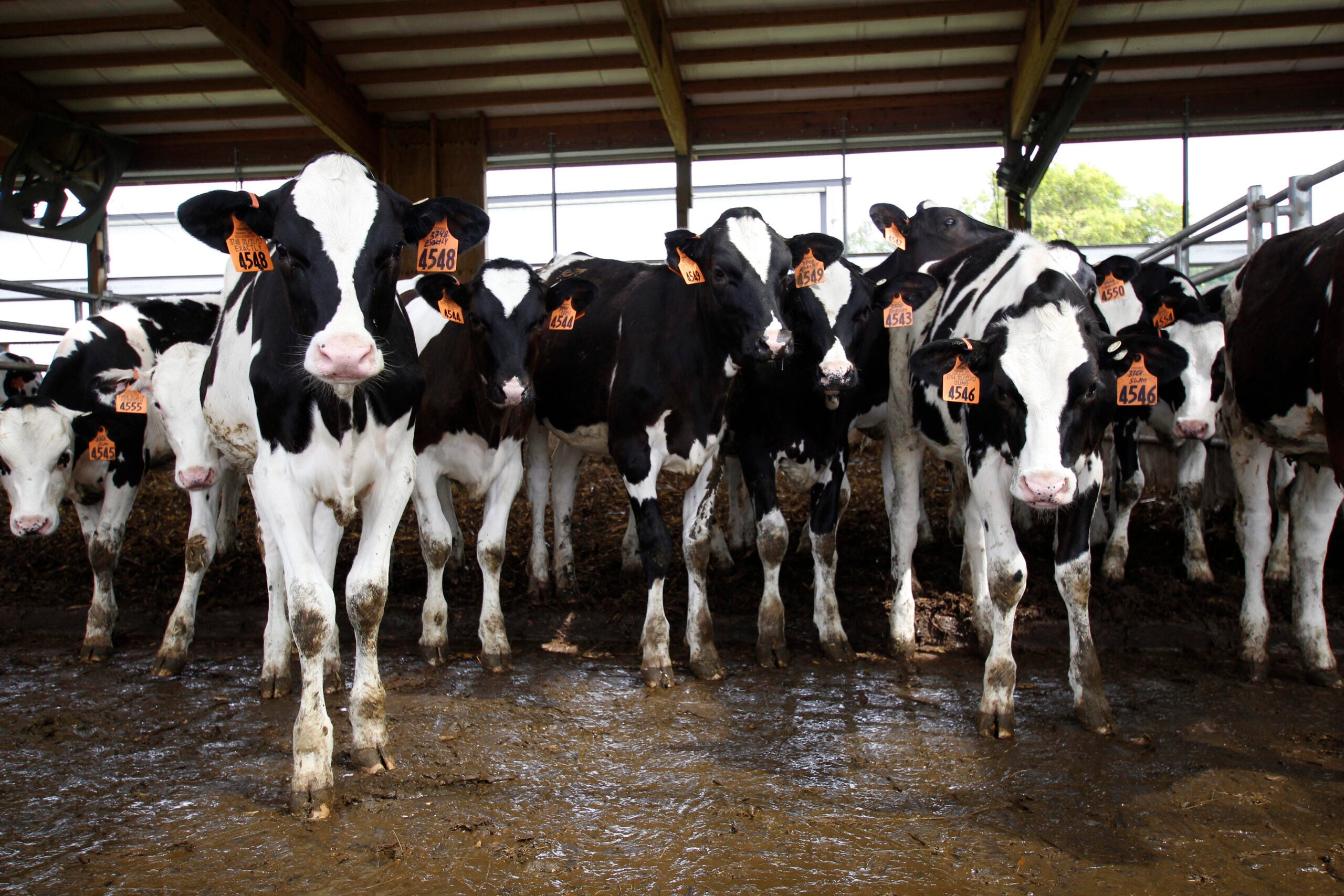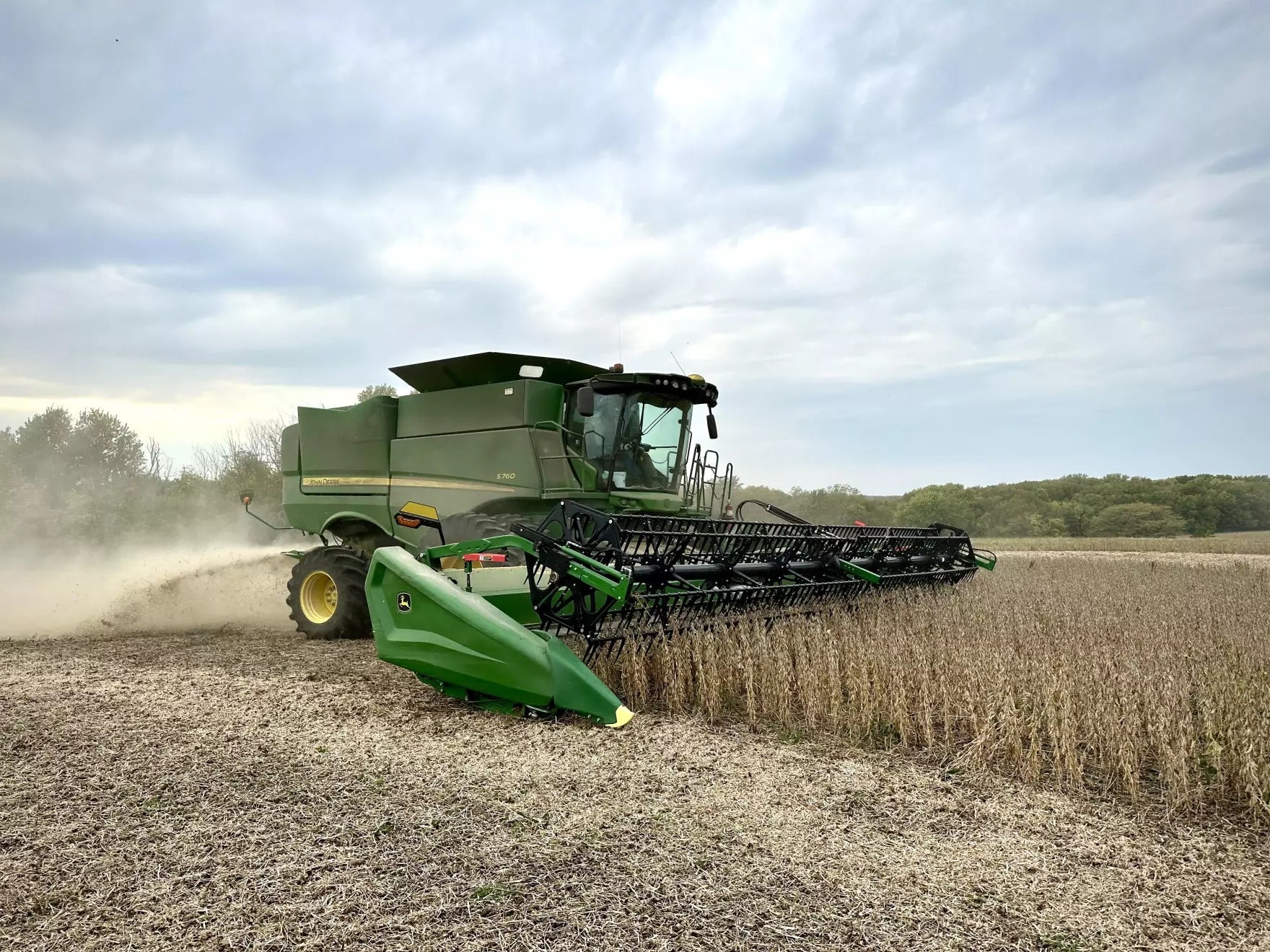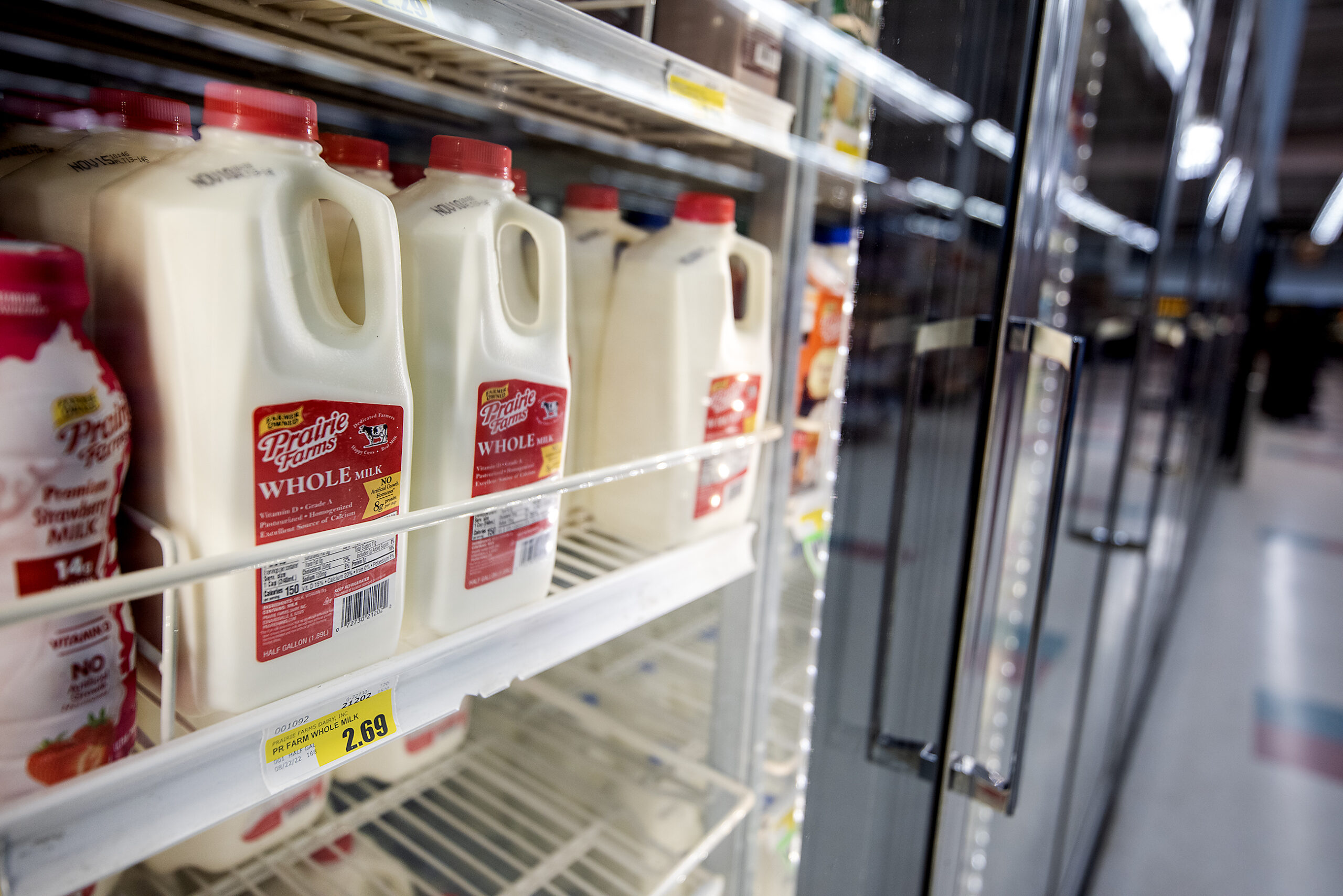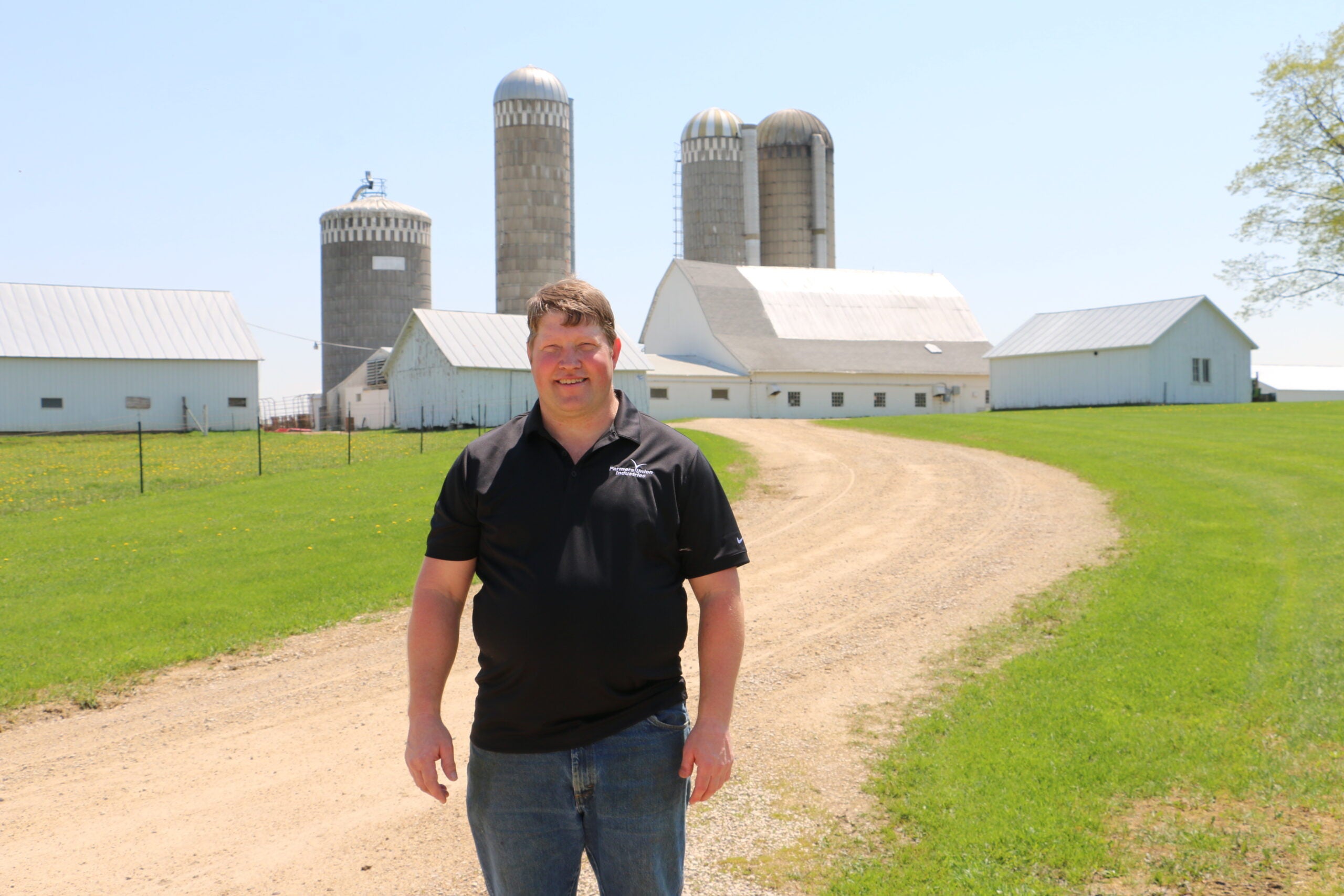Wisconsin dairy farmers will soon have another option to protect against low milk prices.
The American Farm Bureau Federation and their affiliated insurance company recently announced a new Dairy Revenue Protection program that will be available starting in October.
Unlike existing programs for dairy farmers, the new insurance will respond directly to milk prices.
News with a little more humanity
WPR’s “Wisconsin Today” newsletter keeps you connected to the state you love without feeling overwhelmed. No paywall. No agenda. No corporate filter.
“It allows the individual farmer to pick both the amounts of milk he wants to protect price on and the months in which that milk is produced,” said Jim Holte, president of the Wisconsin Farm Bureau.
Farmers set a guaranteed revenue they want to make on a certain amount of milk. If their actual revenue falls below that level, they receive an indemnity payment from the program. The cost of the insurance is based on expected milk prices and risk in the current market.
Holte said the program is similar to federal crop insurance programs available for corn, soybeans and other commodities each growing season. But because milk is produced year-round, Holte said farmers will be able to make changes every day.
With a surplus of milk available and more competition on the global market, Wisconsin farmers no longer have the option to sell more milk in order to compensate for low prices. That’s part of the reason farmers are starting to look for other ways to protect their business, said Brian Gould, professor of agribusiness at the University of Wisconsin-Madison.
He said the new Dairy Revenue program is a change from current safety net programs for dairy, which calculate indemnity payments based on a profit margin between milk prices and input costs like feed.
“(Farmers) like a contract that you can count on, that is actually reflecting the type of market that you’re selling your milk into,” Gould said.
Milk is priced each month based on how it’s used, with price classes broken down into things like cheese and butter. The value of those classes are based on the actual price being paid for the dairy products.
“Those are very volatile markets,” Gould said. “So you’d like an instrument that would move in a similar position. And don’t forget, you’re going to be able to set that minimum (revenue). So you can identify a particular point where that minimum is reasonable for you, that is you can cover your cost of production.”
Because markets are ever-changing, Gould said there will be a learning curve for farmers to figure out how to use the insurance.
And buying the coverage is an added cost, something many producers can’t afford after almost four years of low milk prices.
“It might not be extremely attractive for farmers today or tomorrow with these low prices,” Holte said. “As we return to a more normal pattern of milk prices, the futures prices will offer more opportunities to farmers to lock in a profitable level.”
The federal government will subsidize the cost for farmers like they do for other crop insurance programs.
But Holte said he still expects farmers to be cautious about buying into the new program.
Wisconsin Public Radio, © Copyright 2026, Board of Regents of the University of Wisconsin System and Wisconsin Educational Communications Board.





